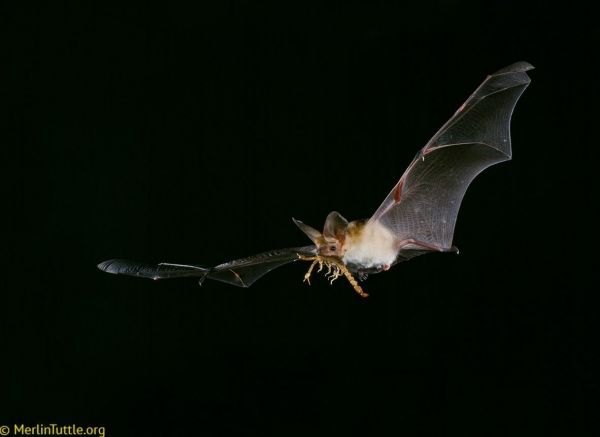In the arms race between predators and prey, each evolves more and more sophisticated ways of catching or escaping from the other. Rachel Page, staff scientist at the Smithsonian Tropical Research Institute, and Ximena Bernal, associate professor at Purdue University, review in Functional Ecology how bats use both private and social information to attack their prey.
“Bats are an exciting group to study because they have evolved so many different hunting strategies,” Page said. “In this review, we look broadly across bats worldwide to investigate the patterns and processes underlying the sensory and cognitive adaptations bats have evolved to successfully hunt their prey.”
Bats hunting in open spaces, high above the forest or over water, depend primarily on their echolocation systems. When they receive an echo from a prey, they produce more and more frequent signals—producing what is called a feeding buzz—as they go in for the kill. In contrast, bats that hunt in more enclosed, cluttered spaces often cannot use echolocation alone to find their prey. The echoes that bounce off vegetation are difficult to distinguish from the echoes of the prey. These bats are very good at listening for sounds emitted by prey.
Read more at Smithsonian Tropical Research Institute
Image: Antrozous pallidus with scorpion. Credit: Merlin Tuttle


